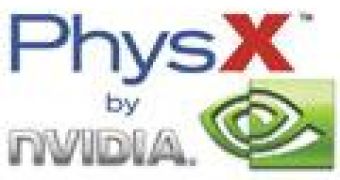Nvidia has recently unveiled some of its plans on the upcoming drivers for its graphics cards, the ForceWare Release 180. The new drivers will be code-named "Big Bang II", and they are going to bring significant improvements on the company's SLI technology support (for those that do not know, the first SLI drivers were named "Big Bang I").
The main features of R180 include DisplayPort support, OpenGL 3.0, GPU transcoding, and Multi-monitor support for SLI, but Nvidia has also made a number of optimizations said to allow its cards be more competitive with ATI's Radeon 4800 series. It seems that the GTX 200 series will benefit from these optimizations in the first row, but some enhancements will come for the 9800 series as well.
Another important feature that comes with these drivers is the support of PhysX processing on dedicated GPUs. The GeForce 8 and 9 series will be able to work as a Physics Processing Unit (PPU), allowing a lot of users to enjoy the physics on their graphics cards. Nvidia has already done this with some of its cards, and test results showed impressive performance boosts. However, the concept is not a new one, as Nvidia seems to have demoed it two years ago, yet the company was not the only one to do so.
Computex 2006 allowed ATI to demo a similar concept. Back then, ATI used an X1600 as a dedicated PPU beside the X1900 for graphics processing, and demonstrated significant performance improvements. The Physics processing on GPU did not come to life, and, while PPUs developed by companies like AEGIA didn't sell well either, all went into dark. After acquiring AEGIA in February, Nvidia started the work on getting the concept back to life again.
The main idea behind it is that anyone who owns a 9600GT card, for example, could simply get a 9800GTX+ and have the 9600GT working as a dedicated PPU. For those that can afford it, upgrades from a 9800GTX to a GTX280 or GTX280 SLI are also valid. SLI marked a great success four years ago, but it?s difficult to say whether a GeForce used as a dedicated PPU will do the same or not. Nvidia still has a lot of work to do on the physics support too, as the library of games listed on the PhysX website is a small one compared to Havok.
The level of performance all the features included in the new drivers will bring remains to be seen. Nvidia surely hopes the release will stand up to the Big Bang name it has been given.

 14 DAY TRIAL //
14 DAY TRIAL //